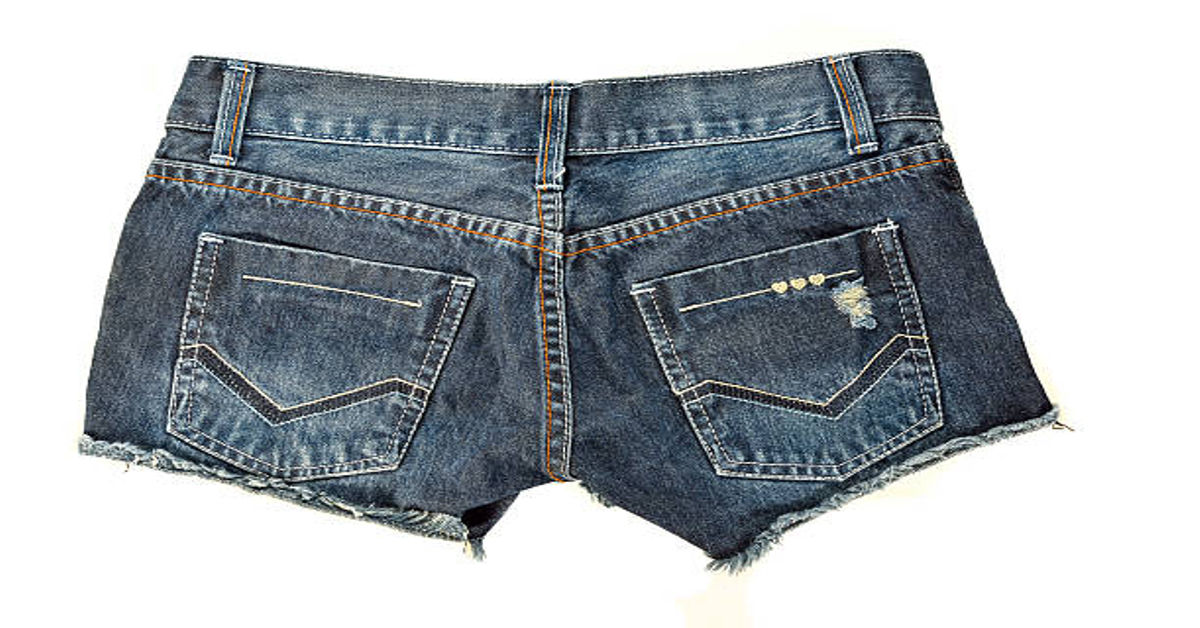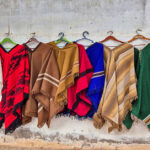Jorts—short for jean shorts—are one of the most recognizable garments in modern casual fashion, combining the rugged durability of denim with the breezy comfort of shorts. While their public perception has shifted dramatically over the decades, what has remained constant is their place as a practical, expressive, and ever-evolving piece of clothing. This detailed guide explores jorts from every angle: their origin, cultural evolution, materials, construction, fit types, usage categories, fashion relevance, gender variations, environmental considerations, care routines, and future trends. Unlike many garments that enter mainstream fashion quickly and fade just as fast, jorts have moved through cycles of utility, satire, rebellion, and style revival. Today, they stand as an enduring, multifunctional clothing choice embraced by diverse groups across the world.
To understand the relevance of jorts, we must begin with denim itself. Denim’s history as a fabric is rooted in resilience; originally designed for workers who needed tough, long-lasting material, it transitioned into fashion territory long after its practical dominance. The conversion of jeans into shorts came naturally—often sparked not by fashion designers but by everyday people who simply cut off worn-out jeans at the knee. This helped transform jorts into a symbol of practicality and self-expression. As trends evolved, jorts became more refined, with manufacturers designing purpose-built jean shorts in different lengths, washes, and fits. Today’s jorts vary widely, from slim-fit styles seen in streetwear to oversized, vintage-style versions commonly associated with 90s and 2000s fashion revivals.
Jorts occupy a unique place in fashion because they effortlessly bridge comfort and durability. They are breathable enough for warm weather, yet sturdy enough to handle physical activities like hiking or yard work. Their versatility also plays a major role in their popularity; jorts can be casual, edgy, sporty, or stylish depending on how they are worn. Despite alternating periods of cultural mockery and appreciation, jorts continue to hold strong because they serve both form and function. Below, we explore everything that makes jorts such a distinctive garment.
The Origins and Evolution of Jorts
Jorts did not begin as an intentional fashion product. Early forms were usually homemade, crafted by individuals who wanted to extend the life of worn-out jeans. This makes jorts one of the few garments born out of resourcefulness rather than runways. During the 1970s and 1980s, denim shorts became stylish in certain countercultures, including punk movements and DIY fashion circles. By the 1990s, jorts reached mainstream popularity, especially among skateboarders, outdoor enthusiasts, and middle-class casual wearers.
The 2000s saw jorts become a cultural phenomenon, though not always positively. Internet humor transformed jorts into a symbol of unfashionable suburban style, yet this criticism only strengthened their cultural identity. Ironically, their “anti-fashion” reputation sparked renewed interest among people who enjoy style with a playful, rebellious edge. Today, jorts have returned as a serious fashion item, with designers incorporating structured cuts, washed finishes, and tailored silhouettes that highlight their utility and charm.
Materials and Construction of Jorts
Although denim is the foundational material for jorts, the specifics of fabric composition have evolved significantly. Traditional denim consists of 100% cotton, woven in a durable twill pattern. Modern versions may include elastane or polyester to improve stretch, comfort, and shape retention. The way jorts are constructed affects their durability, fit, and appearance.
Below is a table outlining common materials used in jorts:
Table 1: Common Materials Used in Jorts
| Material Type | Description | Advantages | Common Uses |
|---|---|---|---|
| 100% Cotton Denim | Classic heavy twill fabric with no stretch | Durable, breathable, long-lasting | Workwear jorts, vintage styles |
| Cotton + Elastane Blend | Denim with 1–5% elastane | Stretchy, comfortable, flexible | Slim-fit and active jorts |
| Cotton + Polyester Blend | A stabilized fabric mix | Shape retention, wrinkle resistance | Everyday fashion jorts |
| Lightweight Denim | Softer and thinner than traditional denim | Cooler, softer feel | Summer and casual wear jorts |
The construction of jorts also includes details such as reinforced seams, riveted pockets, belt loops, and various closure types. Each contributes to their functionality, making them versatile for different environments.
Types of Jorts Based on Fit and Length
Jorts come in a wide variety of silhouettes. Understanding these categories helps wearers choose styles that match their comfort preferences and fashion goals.
1. Slim-Fit Jorts
These provide a closer, more tailored appearance. Often made with stretch denim, they offer mobility while maintaining a sleek shape.
2. Regular-Fit Jorts
This is the standard option with a straight leg and moderate room. It works for nearly all body types and is considered the most universal style.
3. Relaxed or Baggy Jorts
Known for their roomy fit, baggy jorts gained popularity during the 90s and have recently resurged. They are ideal for skaters, casual wearers, and those who prefer a free range of motion.
4. Longline Jorts
These extend closer to the knee or slightly below it. They offer more coverage and are commonly used for outdoor or sporty activities.
5. Cutoff Jorts
The raw, frayed-edge appearance of cutoff jorts makes them synonymous with DIY fashion. They allow maximum personalization and can vary widely in length and style.
6. High-Waisted Jorts
Popular among women’s styles, these create a flattering waistline and vintage-inspired silhouette.
Gender Variations in Jorts
Although jorts are inherently unisex, design details often differ between men’s and women’s styles.
Table 2: Differences Between Men’s and Women’s Jorts
| Feature | Men’s Jorts | Women’s Jorts |
|---|---|---|
| Waist Cut | Typically lower or mid-rise | Often mid-rise or high-rise |
| Fit | Wider leg openings, more room in hips | Tapered or fitted designs |
| Length | Usually longer | Can range from very short to mid-length |
| Style Variety | Focus on utility and comfort | Broader style range, including fashion-focused cuts |
| Stretch Factor | Often minimal stretch | Higher likelihood of stretch denim |
Despite these general differences, the growing trend toward gender-neutral fashion continues to blur the lines between categories.
Uses and Functional Benefits of Jorts
Jorts excel because they serve both practical and aesthetic purposes. Their benefits include breathability during warm weather, resistance to wear, versatility in style pairings, and accessibility across different income levels.
1. Everyday Casual Wear
Jorts pair well with t-shirts, tank tops, casual shirts, and hoodies, making them a staple for daily activities.
2. Outdoor Activities
Their durability makes them suitable for hiking, gardening, camping, and biking.
3. Sports and Movement
Baggy and stretch-based jorts allow for significant mobility in skateboarding and recreational sports.
4. Work Clothing
Some labor-intensive jobs still favor denim garments due to their toughness. Jorts provide summer-friendly work attire.
5. Fashion and Style Expression
High-end brands and streetwear designers have reintroduced jorts as statement pieces.
How to Style Jorts
The adaptability of jorts makes them compatible with numerous fashion aesthetics. Styling options depend on color, fit, and desired look.
Table 3: Styling Suggestions for Jorts
| Style Goal | Recommended Jorts Type | Outfit Ideas |
|---|---|---|
| Casual Everyday | Regular fit | T-shirt + sneakers |
| Trendy Streetwear | Baggy or longline jorts | Oversized hoodie + high-top shoes |
| Summer Comfort | Lightweight denim | Tank top + sandals |
| Edgy or Grunge | Cutoff or distressed jorts | Band tee + boots |
| Feminine and Chic | High-waisted jorts | Blouse + platform sandals |
Accessories such as belts, hats, and layered jewelry can further enhance these outfits.
Environmental Considerations and Sustainability
Denim production has been criticized for its environmental impact, specifically involving water usage, dye pollution, and textile waste. Jorts, however, can contribute positively to sustainability efforts when approached responsibly:
1. Upcycling Old Jeans:
Turning worn-out jeans into jorts reduces waste and gives garments new life.
2. Choosing Recycled Denim:
Some brands now produce jorts using recycled materials.
3. Opting for Durable Products:
High-quality jorts last multiple seasons, reducing the need for frequent replacement.
Sustainable fashion trends have helped reposition jorts as an eco-friendly choice when sourced or created thoughtfully.
Care and Maintenance of Jorts
Like all denim garments, proper care increases the lifespan of jorts. To maintain their quality while keeping environmental impact low, the following recommendations are useful:
Washing Tips
- Wash only when necessary to preserve fabric integrity.
- Turn the jorts inside out before washing to maintain color.
- Use cold water and mild detergent.
- Avoid bleach or harsh chemicals that degrade fibers.
Drying Techniques
- Air-drying is preferred to maintain shape.
- Avoid high heat in dryers, which weakens denim and causes shrinkage.
Storage
- Fold neatly or hang by the waistband.
- Ensure jorts are fully dry before storage to prevent odor or mold.
Future Trends for Jorts
The future of jorts lies in both fashion innovation and cultural rediscovery. Trends indicate that oversized, 90s-inspired jorts will continue gaining popularity. Sustainability-driven consumers will likely increase demand for upcycled and responsibly sourced denim. Meanwhile, tailored and minimalist styles appeal to individuals wanting cleaner silhouettes. Jorts are evolving into a versatile garment that satisfies a wide spectrum of tastes, making their continued relevance almost certain.
FAQs
1. What exactly are jorts?
Jorts are jean shorts, made by either cutting off jeans or purchasing denim shorts specifically designed for warm-weather wear.
2. Are jorts fashionable today?
Yes. Jorts have returned as a popular fashion item, especially within streetwear, casual, skate, and vintage-inspired styles.
3. How do I choose the right length for my jorts?
Choose based on comfort and style preference: shorter for summer and fashion looks, longer for outdoor work or modest coverage.
4. Can jorts be worn in formal or semi-formal settings?
Generally, jorts are best suited for casual settings, though tailored or dark-wash versions can work for relaxed social events.
5. What makes jorts environmentally friendly?
Upcycling old jeans, choosing recycled materials, and selecting durable designs contribute to sustainability.











